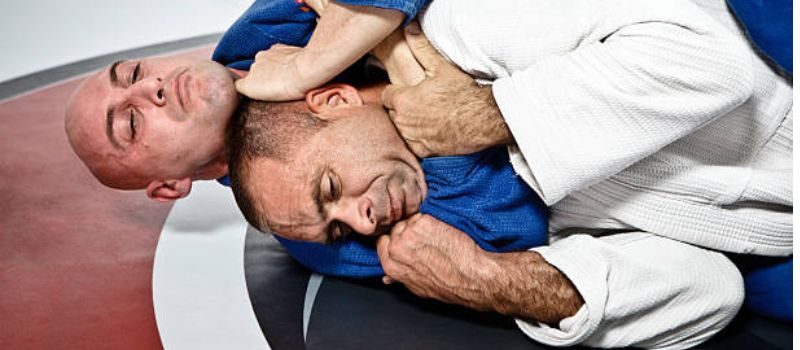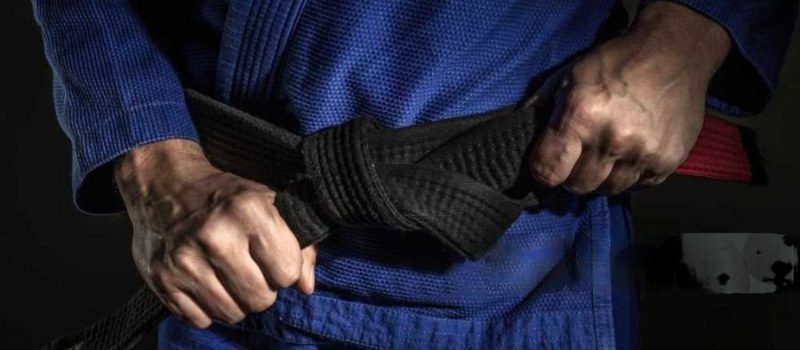Brazilian Jiu-Jitsu (BJJ)
Delving into the gi vs no gi jiu jitsu debate is crucial for Brazilian jiu jitsu practitioners when choosing their focus. Gi and no gi BJJ each offer unique characteristics and advantages that appeal to various elements of martial arts training. This article will navigate the subtleties of both styles, shedding light on their respective benefits, the differences in techniques and strategies, and providing insights to help you decide which style best suits your objectives.
Difference between Gi and No-Gi BJJ
What is gi in bjj compared to what is no gi bjj? The key difference is the attire used during training. Gi jiu-jitsu involves wearing a traditional gi, complete with a jacket and pants that allow for numerous grips and controls, mimicking situations where an adversary might be wearing clothes. On the flip side, no-gi BJJ is practiced in rash guards and shorts, encouraging a quicker and more fluid style due to the reduced gripping possibilities from the absence of fabric.
Advantages of Training in the Gi
Comparing gi jiu jitsu vs no gi, the gi grappling experience offers several advantages for those who opt for the gi. The gi’s texture assists in controlling and submitting opponents with collar, sleeve, and pant grips, which are instrumental in manipulating an opponent’s posture and creating openings for technical sweeping and submissions. Additionally, the gi’s resistance is beneficial for developing grip strength and precision, leading to a more strategic and technical approach to BJJ.
Gi training also bolsters self-defense techniques, as the gi simulates everyday clothing, making the skills acquired in gi BJJ relevant to real-life self-defense situations. Gaining control over an opponent’s clothing can be a decisive factor when the aim is to restrain rather than to exchange blows.

Advantages of Training in No-Gi
In contrast, no gi BJJ focuses on agility development and cardiovascular endurance, as athletes must rely on body positioning and leverage rather than fabric grips. The lack of a gi results in a more dynamic and high-paced training setting, emphasizing fluid transitions and scrambles that enhance cardiovascular fitness and agility.
No-gi BJJ is not just advantageous for agility and speed; it also lays a solid groundwork for mma competition. Training without the gi reflects the conditions of most MMA bouts, equipping fighters for the distinctive mix of striking and grappling present in MMA contests. The emphasis on body control and transitions in nogi bjj is especially pertinent to the fast-moving nature of MMA.

Differences in Techniques and Strategies between Gi and No-Gi BJJ
The attire variations in gi vs no gi bjj result in unique techniques and strategies for each style. Gi BJJ presents an array of gripping options, like collar chokes and lapel grips, which allow for intricate submissions and the use of guards such as the spider guard. The gi’s presence facilitates a more extensive exploration of submission techniques and control strategies.
In the no gi vs gi bjj debate, no-gi BJJ stands out for its focus on body control and precise positioning. Techniques such as underhooks, overhooks, and pummeling are crucial for gaining dominant positions and preparing for submissions like leg locks and the guillotine choke in no-gi. Practitioners must adapt to using sweat and body friction to secure grips, highlighting the significance of control and leverage. No-gi BJJ further emphasizes leg locks and guillotine chokes, which are more accessible without the gi’s fabric.
Factors to Consider When Choosing between Gi and No-Gi BJJ
When considering jiu jitsu gi vs no gi training, several factors should guide your decision. Your personal goals and preferences take precedence; gi training, with its technical approach and self-defense techniques, might be your preference if traditional BJJ and self-defense are your focus. Conversely, if your goals include MMA competition or a preference for a faster, more dynamic style, no-gi BJJ may be more suitable.
The availability of jiu-jitsu classes, training partners, and facilities is another essential factor to consider. If you have access to a well-equipped gym with regular gi classes, pursuing gi BJJ could be a good choice. However, if gi training opportunities are limited or you’re inclined towards a practical, MMA-focused style, no-gi BJJ might be the more practical choice.
Training Recommendations for Gi and No-Gi BJJ
Regardless of whether you choose gi or no-gi BJJ, emphasizing bjj fundamentals is essential. Concentrate on mastering fundamental techniques, such as basic positions, escapes, and submissions. A strong foundation in these bjj fundamentals will provide a solid base for growth and proficiency in either style.
For those practicing gi BJJ, it’s crucial to incorporate strength training, especially for grip fighting. The gi provides numerous gripping options, and a powerful grip greatly enhances your control and ability to execute collar chokes. Focus on collar chokes, lapel-based attacks, and guard retention to excel in gi BJJ.
Conversely, no gi training requires a strong emphasis on body control and smooth transitions. Success in no-gi BJJ relies on a robust clinch game, mastery of underhooks and overhooks, and effective takedowns. Training should also aim to improve cardiovascular endurance and agility to keep up with the typically faster pace of no-gi matches.
How to Transition from Gi to No-Gi or Vice Versa
If you’re transitioning styles, be prepared for the learning curve as you adjust to the new grips and controls. Those moving from gi to no-gi should focus on enhancing body control, positioning, and non-gi dependent techniques, which rely more on body mechanics and leverage.
In the realm of technique development, transitioning from no-gi to gi BJJ requires acquainting yourself with the gi’s unique gripping options. Delve into mastering collar chokes, lapel-based attacks, and guard retention techniques. The gi’s increased friction and resistance necessitate patience as you adapt your game to these new challenges.
Famous Practitioners and Their Preference for Gi or No-Gi
Among the famous BJJ practitioners, Marcelo Garcia stands out for his exceptional skills in both gi and no-gi competition. Garcia’s technical mastery and precision illustrate the advantages of training across both BJJ styles, proving that a versatile approach can lead to dominance in the sport.
Eddie Bravo, another luminary in the field, has made a significant impact with his 10th Planet system, which is a no-gi BJJ innovation. Bravo’s system has been pivotal in the sport’s evolution, highlighting the significance of fluid transitions and unconventional submissions in no-gi grappling.
Conclusion
Ultimately, the decision between training in the gi or exploring no-gi Brazilian Jiu Jitsu boils down to personal preference, goals, and what’s available. Gi training has the edge in control and self-defense applicability, while no-gi BJJ favors speed and MMA relevance. Regardless, focusing on fundamental techniques, building a robust foundation, and constantly refining your skills is crucial. Both gi and no-gi styles offer a comprehensive and fulfilling martial arts journey.
FAQs
Is it better to start Gi or no-Gi BJJ?
When starting BJJ, there’s no one-size-fits-all answer, as it hinges on your individual goals and preferences. Initiating your journey with gi BJJ can lay down a strong technical base and arm you with skills applicable to self-defense. On the flip side, beginning with no-gi BJJ may better suit those aiming for a more practical, MMA-oriented, and dynamic training environment.
Is BJJ better with or without Gi?
The bjj gi or no gi debate is ongoing, with neither style being superior. Gi BJJ is characterized by its strategic control and methodical pace, while no-gi BJJ is distinguished by its emphasis on speed, agility, and practicality for MMA.
Is no-gi BJJ harder than Gi?
The no gi meaning often implies a more challenging experience due to the faster pace, greater emphasis on body control, and fewer grips available, which can be more demanding than gi BJJ for some practitioners. Yet, the perceived difficulty varies based on each individual’s preferences and skill set.
Is Gi or no-Gi more practical?
The practicality of gi or no-gi BJJ, often framed in the gi vs nogi debate, hinges on the context of its application. Techniques in gi BJJ mirror real-life scenarios where an assailant might be clothed, enhancing its relevance for self-defense. In contrast, the gi vs nogi discussion acknowledges that no-gi BJJ suits MMA better, where striking and grappling are intertwined, thus offering a distinct set of advantages.
Why do people prefer no-Gi?
Many individuals gravitate towards no-gi BJJ, or no-gi jiu-jitsu, for its rapid and dynamic nature, which can be more exhilarating. Furthermore, no-gi jiu-jitsu is often regarded as more conducive for MMA competition, as it equips practitioners with skills tailored to the unique requirements of mixed martial arts, in line with their combat sports aspirations.
Feel free to comment down there,what you think about this blog
- #bjj gi no gi
- #bjj gi or no gi
- #bjj no gi
- #bjj nogi
- #bjj without gi
- #gi and no gi
- #gi grappling
- #gi jiu jitsu vs no gi
- #gi or no gi
- #gi vs no gi
- #gi vs no gi bjj
- #gi vs no gi jiu jitsu
- #jiu jitsu no gi
- #no gi bjj
- #no gi jiu jitsu
- #no gi vs gi
- #no gi vs gi bjj
- #no-gi
- #nogi
- #nogi bjj
- #what is gi in bjj
- #what is no gi bjj



[…] Read: Choosing Between Gi and No-Gi BJJ: A Quick Guide […]